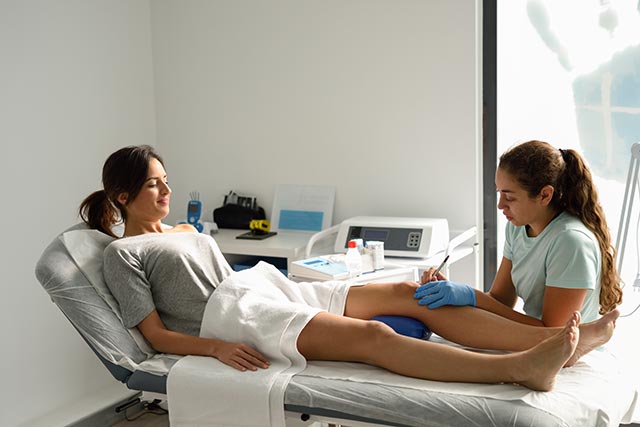Electroacupuncture improves the physical function of patients with knee osteoarthritis
04/18/2019 / By Michelle Simmons

Knee osteoarthritis is a degenerative, “wear and tear” type of arthritis that commonly occurs in older adults. It develops gradually and causes pain that worsens over time. Fortunately, researchers at Nanjing University of Chinese Medicine in China and Marche Polytechnic University in Italy found a natural way to manage this disease. They discovered that receiving electroacupuncture for four weeks can help reduce pain and improve physical function of people with knee osteoarthritis without causing serious side effects.
Electroacupuncture is a form of therapy wherein thin needles are inserted into the body at certain areas or acupoints. Based on traditional Chinese medicine (TCM), stimulating different acupoints on the body could provide various health benefits. Unlike regular acupuncture, these thin needles are attached to a device that generates continuous electric pulses using small clips.
The researchers reached this conclusion after analyzing the data of randomized controlled trials that studied the effects of electroacupuncture on knee osteoarthritis. In their systematic review, they collected the evidence from 11 randomized controlled trials with a total of 695 participants to evaluate the safety and effectiveness of electroacupuncture on knee osteoarthritis.
Based on the evidence they gathered, electroacupuncture effectively reduced pain intensity and improved physical function based on osteoarthritis questionnaires. In addition, they found that this form of therapy was more effective in treating knee osteoarthritis when compared to conventional treatment and manual acupuncture. Furthermore, they also discovered that these benefits take effect after at least four weeks of receiving the treatment.
The findings of the systematic review suggested that electroacupuncture may be used as a safe and effective treatment in the management of knee osteoarthritis in older adults. These findings were published in The American Journal of Chinese Medicine.
Electroacupuncture for minimizing pain after knee surgery
As it appears, electroacupuncture not only relieves pain due to osteoarthritis but also pain after surgery. A systematic review and meta-analysis published in the journal Medicine revealed that electroacupuncture may be used as a safe and effective intervention in treating pain after total knee arthroplasty.
Total knee arthroplasty is one of the most common joint replacement surgeries in the U.S., and postoperative pain is a major complaint among people who undergo this type of surgery. In addition, postoperative pain due to the total knee arthroplasty also negatively affects the patients’ postoperative rehabilitation, daily activities, quality of life, and social and economic conditions.
In this review, a team of researchers from China looked at the beneficial effects and safety of electroacupuncture for postoperative pain after total knee arthroplasty. Electroacupuncture has also been widely used in clinical practice for pain after surgery, but its safety and effectiveness are not yet fully understood. (Related: Electroacupuncture helps older people regain their cognitive function after surgery.)
For the review, the Chinese research team gathered randomized controlled trials related to electroacupuncture treatment of pain after total knee arthroplasty from three databases of English literature and four databases of Chinese literature. Then, they assessed the effects of electroacupuncture on pain by using the visual analog scale (VAS) or numerical rating scale. After analyzing the effects and safety of electroacupuncture therapy, the research team found that this form of therapy may be considered as a safe and effective intervention to treat pain after total knee arthroplasty.
Visit HealingArts.news to learn more about the health benefits of electroacupuncture.
Sources include:
Submit a correction >>
Tagged Under:
acupuncture, alternative medicine, arthritis, Chinese medicine, elderly, electroacupuncture, knee osteoarthritis, Natural Treatments, older people, Osteoarthritis, pain management, pain relief, remedies, research, seniors, TCM, therapies
This article may contain statements that reflect the opinion of the author
RECENT NEWS & ARTICLES
COPYRIGHT © 2017 NATURAL MEDICINE NEWS





















